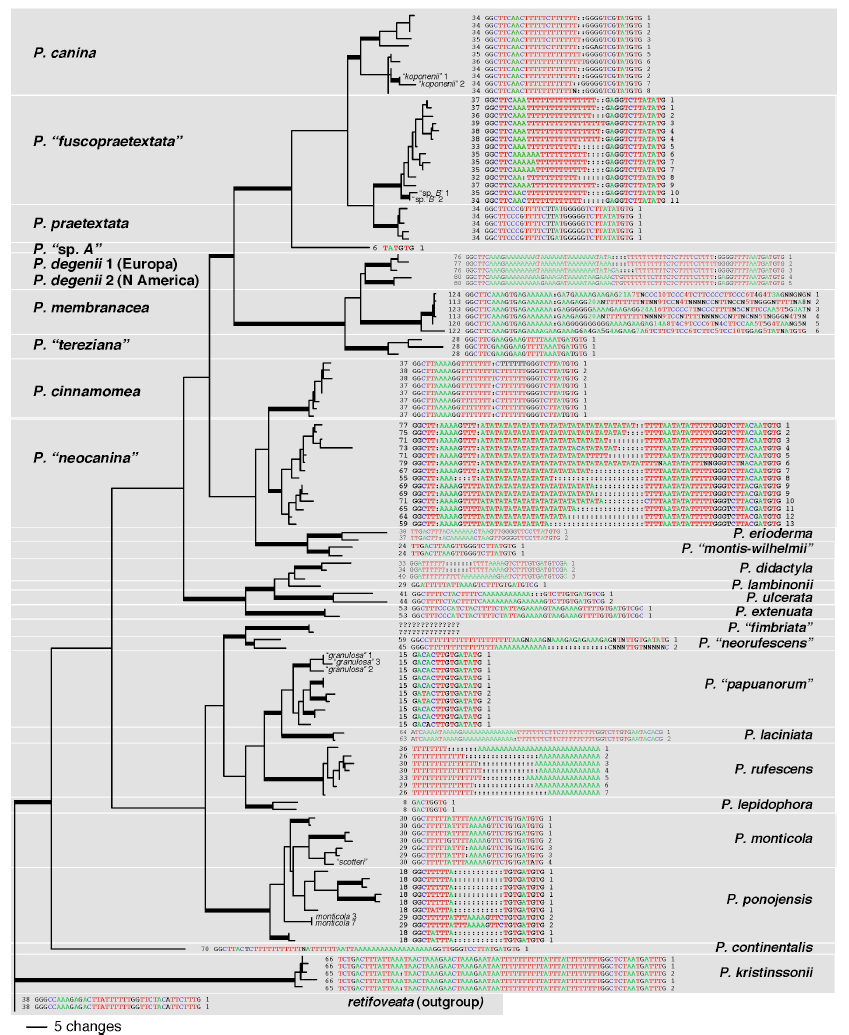Our collections for the revision of section Peltigera, corresponding to the P. canina complex (≈30 species; Fig. 1 – Overview Page), will be mostly from North America and eastern Russia. This most species-rich section of Peltigera includes many small species complexes, e.g. P. ponojenis+P. monticola; P. canina.+P. “fuscopraetextata”+P. praetextata. Both examples show signs of rampant cryptic speciation (Fig. 3, 4). Some of the resulting infraspecific monophyletic groups, represented by specimens collected in North America, have already been recognized as putative new species (Miadlikowska et al. 2003; O’Brien et al. 2009). Comprehensive and detailed revisionary work based on phenotypic and molecular data is required throughout section Peltigera before new species are described and formally named.
 |
Fig. 3. A. P. canina. B. P. membranacea. C. P. rufescens. D. MP tree (PAUP*) of 41 species and one putative taxon of Peltigera based on LSU data (including INAASE characters), combined with morphological and chemical (triterpenoids) characters, showing intrageneric sections as defined by Miadlikowska and Lutzoni (2000). E. ML tree (RAxML) based on combined ITS, RPB1 and beta-tubulin loci for ten species and four putative taxa of section Peltigera. For both D and E, thicker internodes represent bootstrap support ≥ 70%, and putative taxa are in quotes.
 |
Fig. 4. MP tree (using PAUP*) of section Peltigera (newly described and putative taxa in quotes) based on ITS, INAASE and ARC characters. Thicker internodes represent MP bootstrap support ≥ 70%. Sequences represent the ITS1-HR region for each specimen. Number in front of each sequence indicates the length of the ITS1-HR. Identical sequences are followed by the same number. (Peltigera lambinonii was recently synonymized to P. soredifera by Vitikainen [2008]).